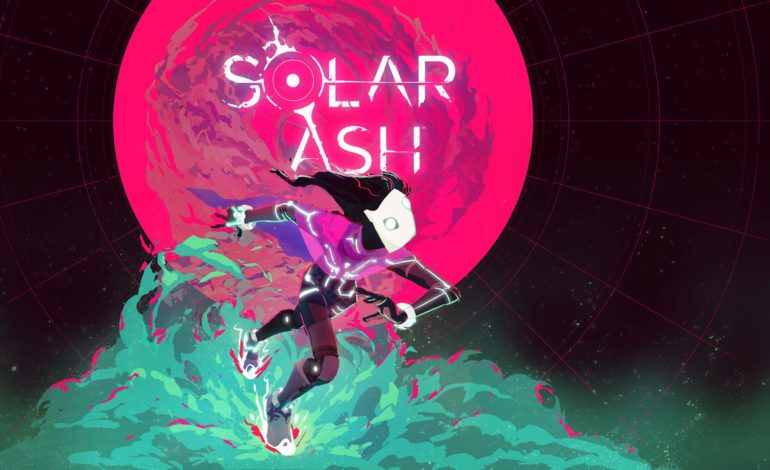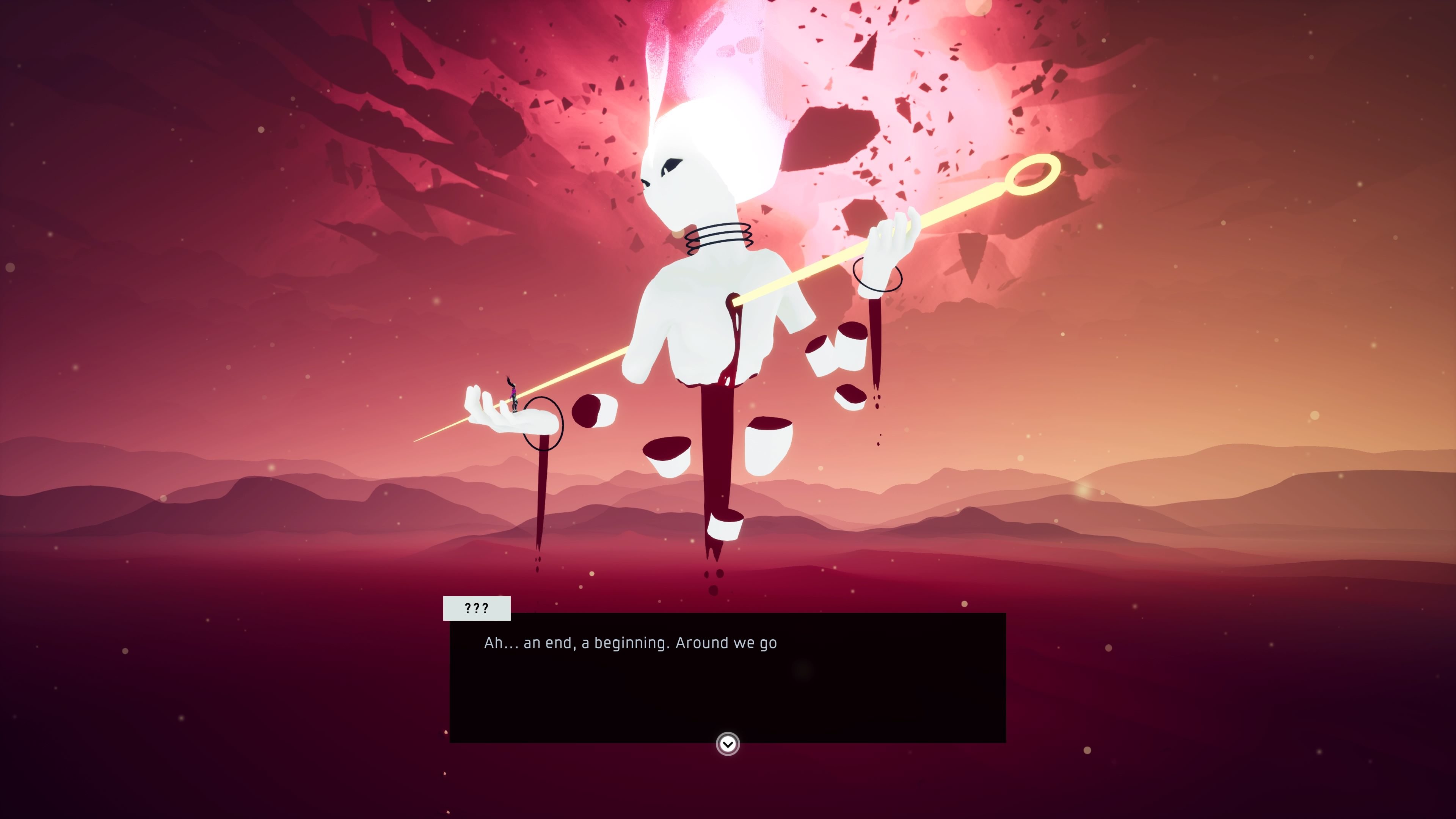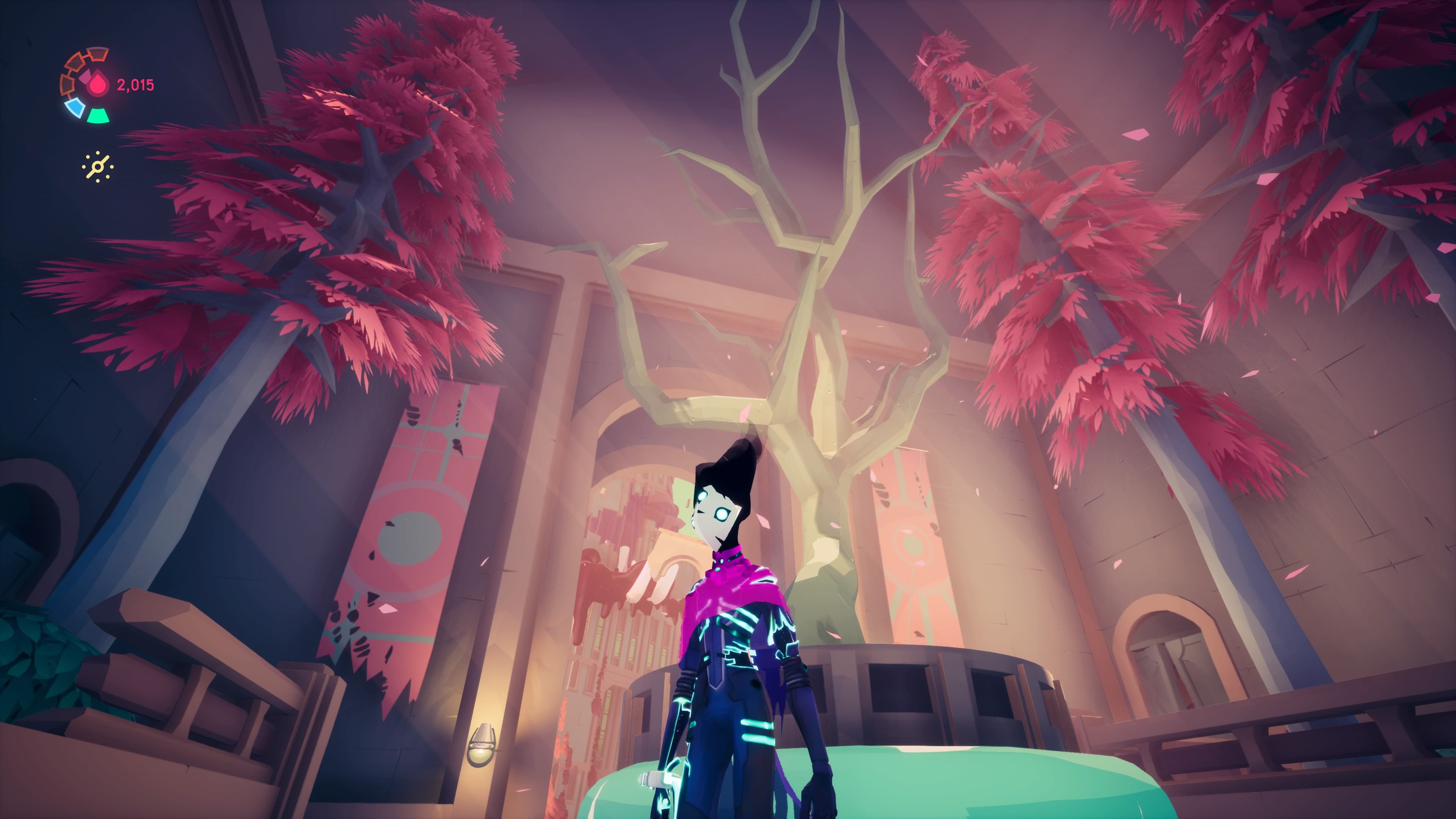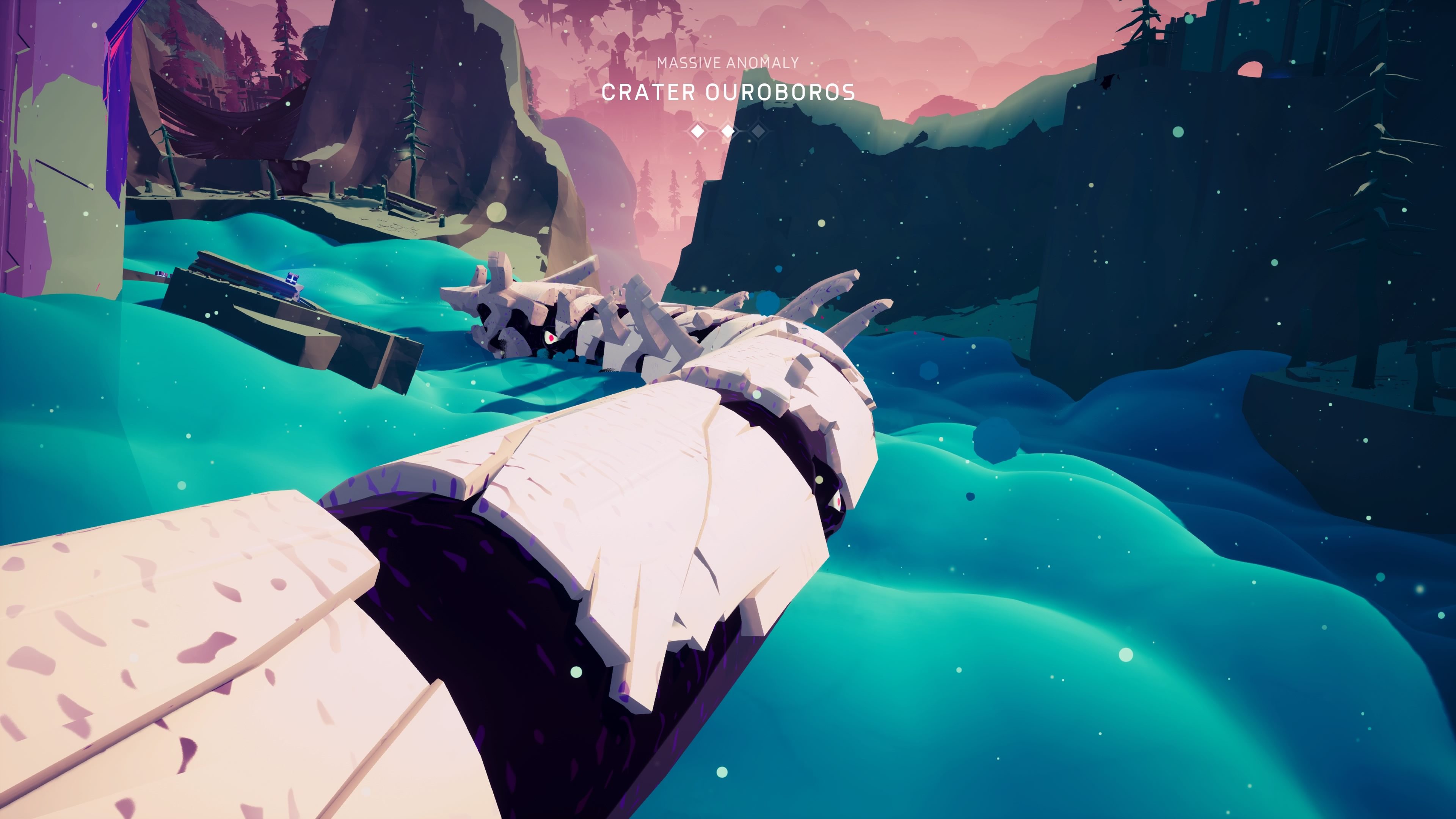

Synthwave aesthetics are primarily present in cyberpunk games, giving a glimpse into the neon colored future that supposedly awaits us in the next century. While it can be a bit campy and overdone, futuristic scenery with this ever present fluorescent aesthetic tends to be one of my favorite parts of the genre. When done well, it adds a certain flair that makes everything pop more, rather than only serve to highlight certain elements. This, when combined with absolutely psychedelic and trippy alien monsters and goop and the smooth movement of games a-la Jet Set Radio and the better Sonic 3D games is a recipe for success, and that’s exactly what you get with Solar Ash. A beautifully done presentation piece with fun movement, and at times stressful gameplay.


Solar Ash is primarily a beautiful game with a trippy aesthetic, you’re already stranded in space looking to save your civilization using a device located near a black hole. Out of the gate, this is already a relatively interesting story, especially with how the issue surrounding the black hole is presented. There’s a centralized system and other people that should be there with the main character, but our hero Rei is stranded and alone. Now with the inability to return to her comrades, Rei must figure out why the system isn’t responding and save everyone before it’s too late.
While a lot is left omitted and there’s a mysterious godlike entity that talks to you in a generally unfavorable way, the story was what would have been a major seller for me. Unfortunately, story beats are few and far between, as exposition is put to the wayside in favor of finding collectibles and doing time trials. This is due to the core gameplay loop of the game being the movement, which I’ll touch on a bit later. What I can say Solar Ash does particularly well is establishing a general “feel” for each area even if the coloration remains mostly the same. Structures of ages past being run down and torn not only by the pollution that you’re fighting, but with time make for great environmental storytelling. Even moving from the crash site to the initial cloudy dreamscape where you meet your first friend and first boss fight is enough of a story on its own; an excellent way to set the pace for the rest of the game without having to say much. The issue is, this general omission makes it tedious to put story bits together as they’re delivered, as there tend to be long stretches of silence while Rei skates back and forth completing the same objectives over and over.


What I can easily say the strongest feature Solar Ash presents is satisfaction. It is incredibly satisfying to skate through foreign worlds and jump or grapple from cliff to cliff, taking in all the colors and environmental changes along the way. This is the main focus of the game, as most of the game’s objectives and collectibles are based around not only how you can platform to them, but how quickly you can access them. The “combat” is quick, minimal, and largely optional. It suffers from the same lack of combat depth quite a few games have had as of late, having the game favor the movement options much more. The enemies are little more than hindrances in what is primarily a collection of time trial “attack the objective” missions while platforming and swinging around harmful platforms. This is the primary gameplay loop not just for the normal sequences, but for boss fights as well. While the movement is incredibly smooth and satisfying, the combat can get old relatively quick, and I mostly found myself skipping enemies after I really got accustomed to the movement.


I think Solar Ash is great to experience in small bursts and is really a game to take at your own pace to really focus on the environments and exploration. Unfortunately the core loop is a bit counterintuitive for that, with time trials that can get stressful to complete being a majority of the focus for completing objectives. That being said, essentially everything else about the gameplay experience is incredibly satisfying. I’m a huge fan of the visuals and character design, and frankly if you’re into the aesthetic enough it can carry the entire game. I hope to see more like this from Heart Machine in the future, perhaps with a bit more depth to combat that can really bring out the potential a game like Solar Ash had.
Score: 8 out of 10
Reviewed on PlayStation 5
Play games, take surveys and take advantage of special offers to help support mxdwn.
Every dollar helps keep the content you love coming every single day.
